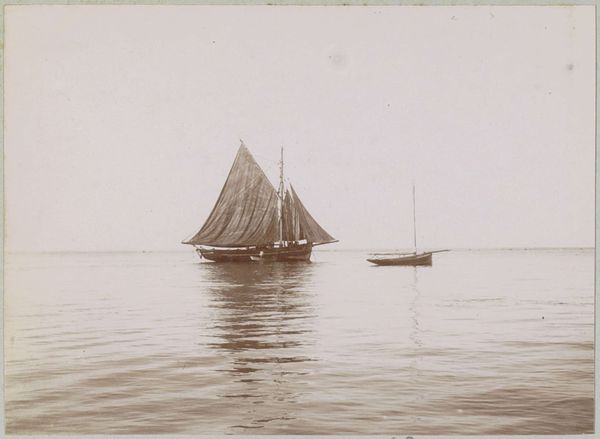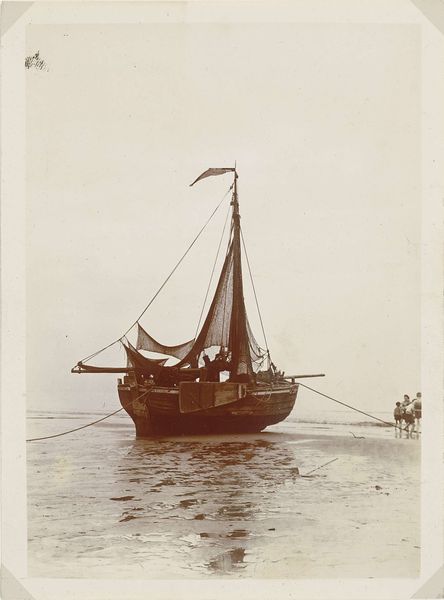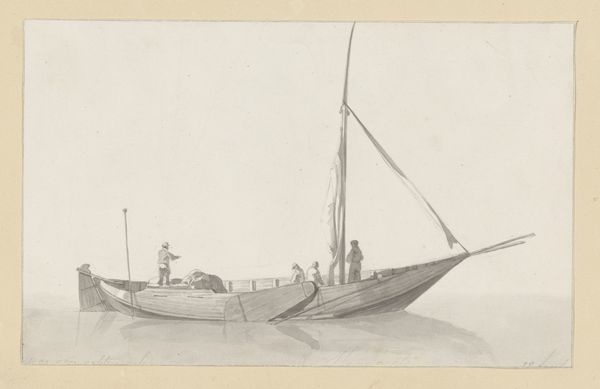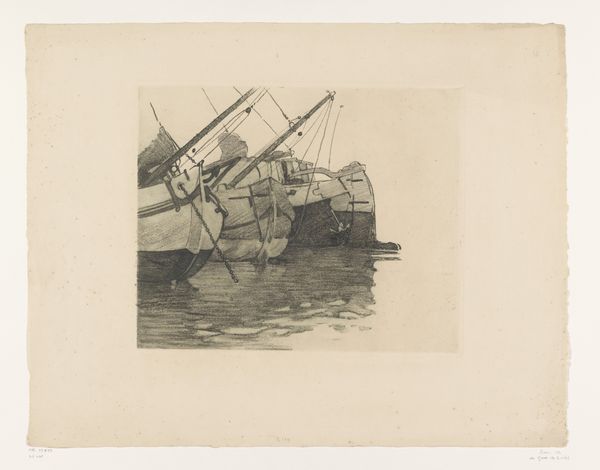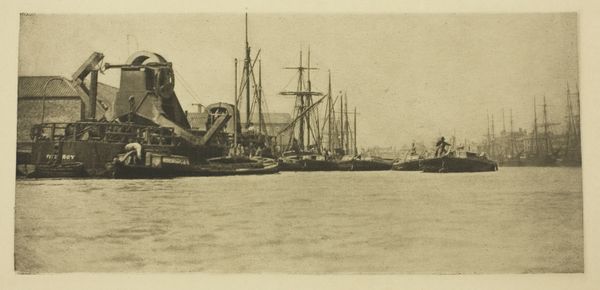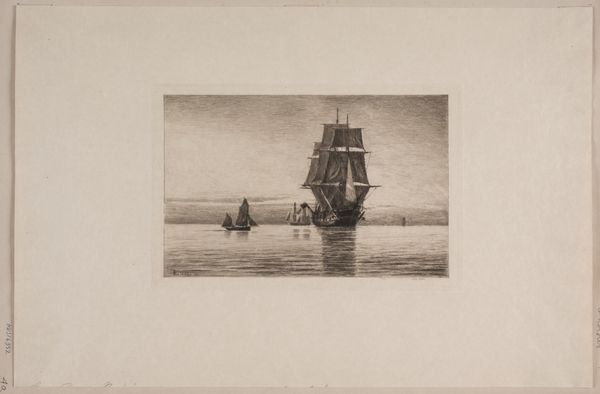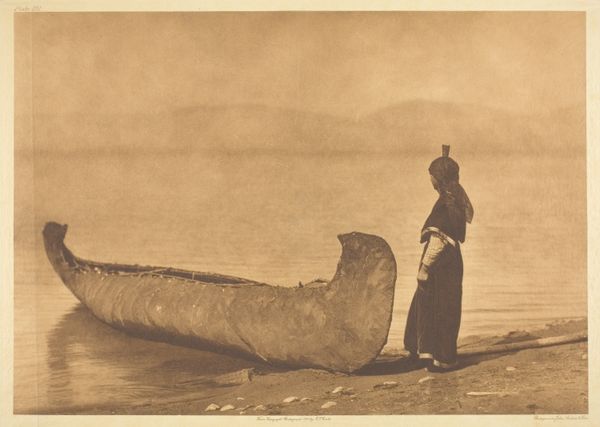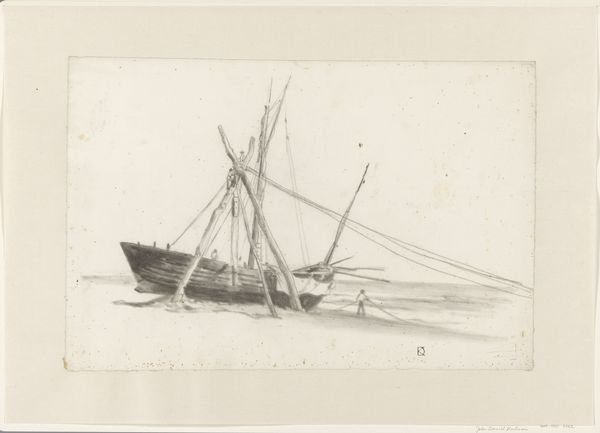
photography, gelatin-silver-print
#
print photography
#
photography
#
gelatin-silver-print
#
indigenous-americas
Dimensions: 29 × 38.8 cm (image/paper); 45.3 × 56.5 cm (mount)
Copyright: Public Domain
Curator: Edward S. Curtis created this gelatin-silver print titled "Masked Dancers in Canoes - Qagyuhl A" in 1914. It resides here at the Art Institute of Chicago. Editor: Immediately, I get this incredible feeling of being both present and incredibly distant from something significant, a little eerie almost, because the photograph gives the scene a dreamy otherworldly quality, yet its sharpness of detail hints at this event being firmly planted in reality. Curator: The Qagyuhl, part of the Kwakwaka'wakw peoples of British Columbia, staged elaborate winter ceremonies full of masked dancers, which you can just make out crowded onto these two large canoes. Editor: Those canoes look more like floating stages than simple watercraft! It makes me wonder about the physical demands on the dancers, and even the canoeists. Keeping balance in those waves while maintaining the solemnity of the ritual… that must have taken intense focus. What was it like back then? Curator: Indeed, winter ceremonies were about reaffirming cultural continuity through performances invoking powerful ancestral beings. These masks and regalia are not merely decorative; they embody forces—animal, human, spirit—central to the Qagyuhl worldview. Their very presence could alter the flow of events. Editor: Do you think the monochrome process here, the silvery tones, adds another layer? A sense of both historical document and artful interpretation? I see that, somehow. Curator: Absolutely. While the photograph freezes this moment, its artistry opens pathways for considering how rituals enact cultural memory. Curtis captures not only the scene, but something about the emotional tenor and deep-seated beliefs at work. He offers more than ethnographic observation. Editor: I can agree on that! I feel like I'm witnessing a vibrant performance—silent now, but resounding in implication. And though tinged with the melancholic mist of passing eras, a timeless reverence echoes nonetheless.
Comments
No comments
Be the first to comment and join the conversation on the ultimate creative platform.

